lithuania
These etchings relate to this country - known also as 'lietuva' - and most of them have already been viewed in earlier webpages except for the last image which will be given full details. There are a few photos and a drawing underneath the etchings. Thank you.
- flute player
- sleeping beauty
- winter trees. druskinkai
- lithuanian angel
- nida
- river. uzupis
________________________________________________________________________________________________
Full details with accompanying text and other photos can be found in travel (Part 3) for flute player; sleeping beauty. In miscellanous (Part 1) are details for winter trees and in mythology (Part 3) are the full details for lithuanian angel.
________________________________________________________________________________________________
flute player
This image of a flute player is based on a statuette outside the Devil’s Museum in Kaunas. Lithuania. There is a small park dotted with statues and this one took my particular attention. Lithuania was only christianized by the Teutons roughly six hundred years ago and throughout the country there is still a strong undercurrent of paganism in its national culture. Lithuania is now a devoutly Catholic country but even on top of the crosses on the magnificent roofs of its soaring cathedrals there are metal circles with swerving sunrays jutting from them - harking back to a worship of the sun from pre-Christian days. The Devil’s Museum itself is very interesting filled only with figurines of the Devil throughout the whole world. It is not surprising to come across such a museum in a country that has a strong sense of nature worship and interest in pagan traditions. It can be said that such a mythic observation of nature is often the case throughout most of Europe but it does seem to me more so in Lithuania. After all, near a coastal town called Nida next to the Baltic Sea (a place where you can visit Thomas Mann’s holiday house) is Witch’s Hill. A forested area filled with large wood carvings of witches, devils, gods and goddesses. However, it is all rather playful. As a Lithuanian woman once cheekily commented to me: “The Devil is our friend. We can ‘trust him’. He always keeps his promises.” The flute player reflects the more mythic, sublime semblance of nature and it is an image I find especially enriching.
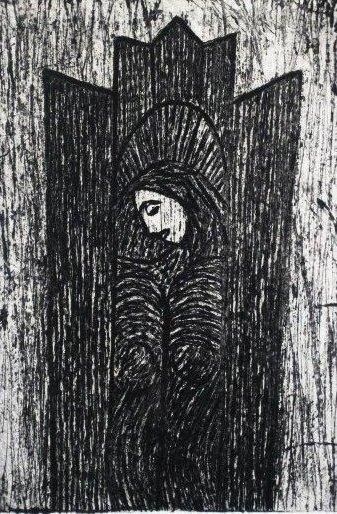
sleeping beauty
This etching details the following carved wooden totem in a little out-of-the-way park in Vilnius by a wide canal.
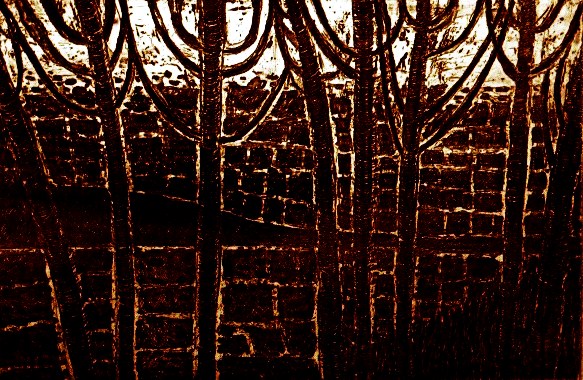
winter trees. druskinkai
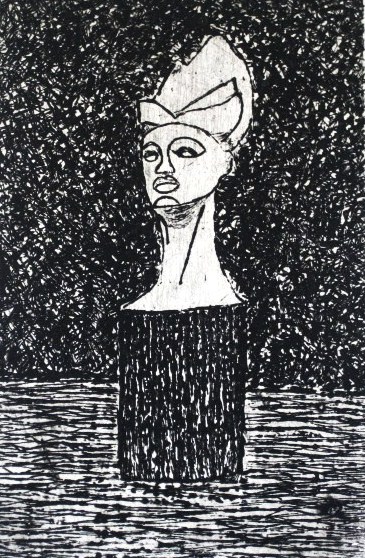
lithuanian angel
(Orpheus in the River). When I eventually saw this angel head in the river at Uzupis in Vilnius I was reminded of Orpheus who had his decapitated head thrown into a river by the jealous Maemids who were female followers of Dionysus. It is said Orpheus’s head cried out his love for Eurydice as he floated down the waters. The angel head was carved in an artist’s community by the river in Uzupis which is a sort of bohemian area in Vilnius and it was also an area where many Russians lived; in the pub by the river artists & writers would gather and I remember they were organising to have an angel monument built in the main street of Uzipus for an artist friend who had died before time.
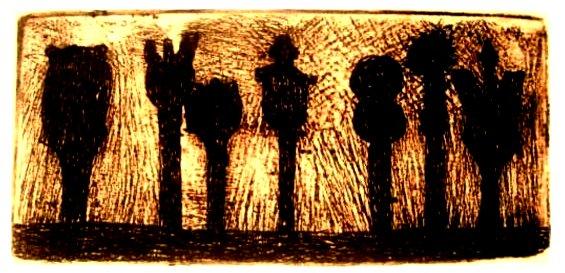
nida
Lithuania was only ‘Christianized’ 600 years ago and so there is still a strong pagan undercurrent in its culture although it is considered to be a steadfast Catholic country. (For instance, one cannot help but notice how on the very top of the Catholic churches in Vilnius there are positioned metal circles with sunrays in a sort of subconscious veneration to Saule goddess of the Sun). These wooden ‘pagan’ graveyard totems testify to its pre-Christian past. Nida is an interesting place. On the out-of-way Baltic coast the sandhills out of town and the windswept forest terrain reminded me a little of the wild Australian coastline. Nearby is a sculpture park called the Witch’s Hill filled with life size wooden carved gods, goddesses, goblins, witches etcetera.
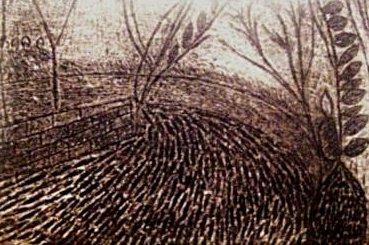
River. Uzupis. Vilnius. Lietuva.
Sepia. 6"X4" Copperplate M. N/A.
_______________________________________________________________________________________________________________

burial totems. nida.
sleeping beauty
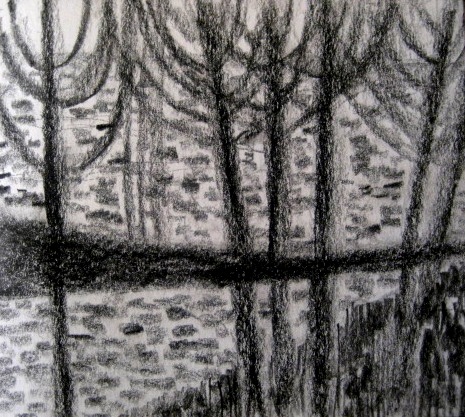
druskinkai
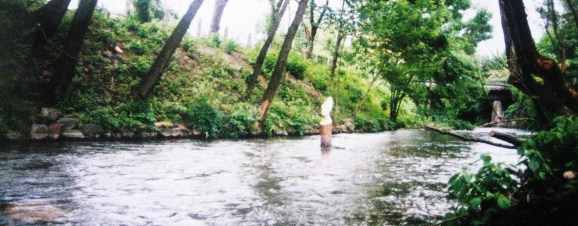
angel in river. uzupis
wooden church in the lithuanian countryside
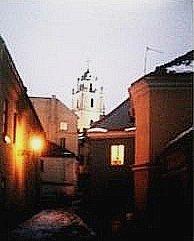
A church tower in Vilnius which - as mentioned previously - has sunrays on the very top. Lithuania’s ever lingering nature worship harks back to its relatively recent pagan heritage. As also stated Lithuania was only Christianized 600 years ago.
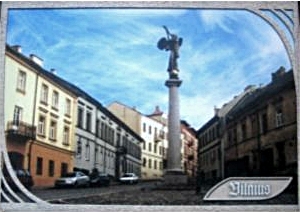
postcard with angel in uzupis
________________________________________________________________________________________________________________
I wish to add that I met many extraordinary, innovative people in Lithuania and none more so than Alexandre Vassiliev. Who is he you may ask"? I suggest you see his website:
http://www.vassiliev.com/aboutAV.htm
However, he is a fashion designer and fashion historian mainly based in Paris. Many emigres came back to Lithuania after the fall of the Soviet Union and quite a few have settled there permanently; I had the good fortune to meet some of them and in short one can say their intelliegent vibrancy bodes well for this emerging nation on the world scene. *
_______________________________________________________________________________________________________________
* When one takes into account the broader global context that I consider it very important that the so called 'smaller nations' such as the former Soviet satellites (and even for a larger nation such as Australia) maintain their local independent cultrual tradtions in the face of an imperial homogenous globalisation process that threatens to insidiously overcome them. Cultural independence is essential if the threads in that varied tapestry called democracy stay strong; for an international 'cultural variety' allows for the free existence of many different points of view in this world to be liberally sustained; and that such a multiple socio-cultural situation can only be healthy for the integrity and human value of each individual life. Ciao.
________________________________________________________________________________________________________________